Images: Weird Ancient Fish Fossil (Tiktaalik)
A strange discovery
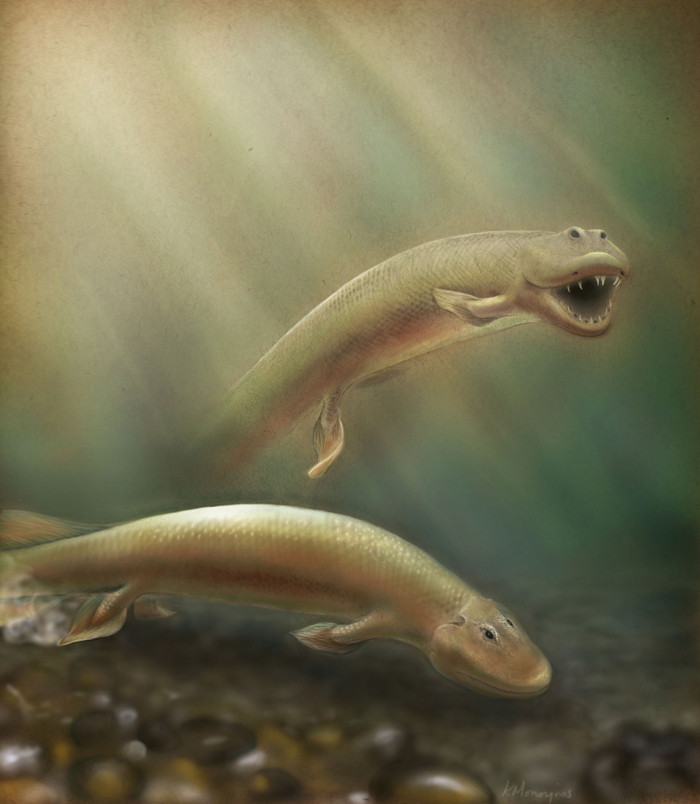
The discovery of additional materials from the hind fin of Tiktaalik roseae, a 375-million-year-old transitional fossil, suggest it was able to use its hind fins as props as well as paddles. Tiktaalik's ability to swim as well as support itself on the substrate underscores the idea that the mechanisms that allowed vertebrates to invade land evolved in the water first. The new material is described in a paper by Neil Shubin, Ted Daeschler, and Farish A. Jenkins, Jr. in the January 13th early online edition of PNAS.
Shedding light on a mystery
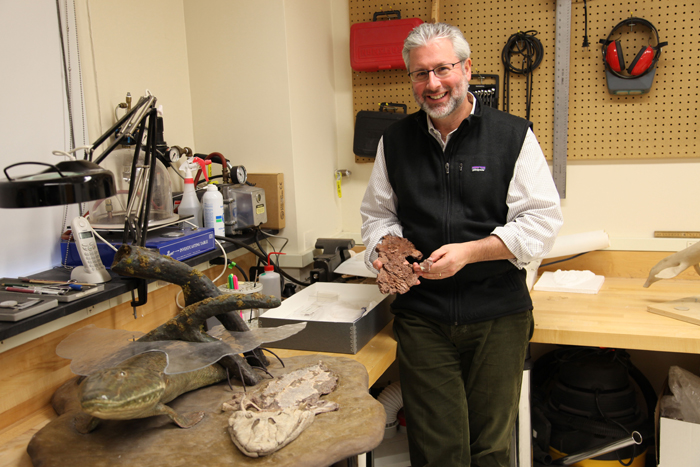
Neil Shubin standing in his University of Chicago lab with the pelvis of Tiktaalik roseae, a 375-million-year-old transitional fossil that sheds light on the transition from life in the water to life on land. The newly discovered pelvis is described in his inaugural article at PNAS with coauthors Ted Daeschler and Farish A. Jenkins, Jr.. Shubin was elected into the National Academy of Sciences in 2011.
A replica shows the transition
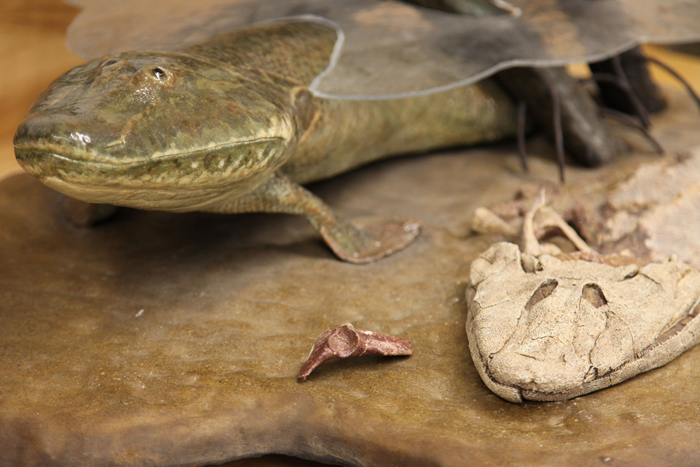
The newly discovered pelvis of Tiktaalik roseae, pictured here between a life-sized reconstruction (left) and a cast of the skeleton (right), is described in Neil Shubin's inaugural article at PNAS with coauthors Ted Daeschler and Farish A. Jenkins, Jr.. Shubin was elected into the National Academy of Sciences in 2011.
The pivotal piece
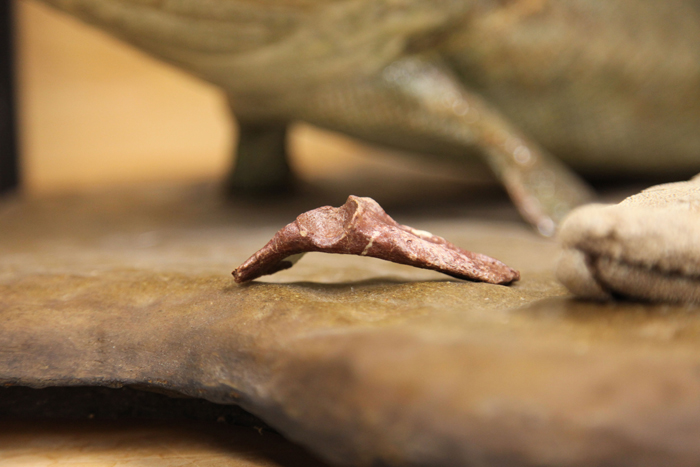
The newly discovered pelvis of Tiktaalik roseae is described in Neil Shubin's inaugural article at PNAS with coauthors Ted Daeschler and Farish A. Jenkins, Jr.. The discovery sheds light on the transition from life in water to life on land.
Evolution underwater
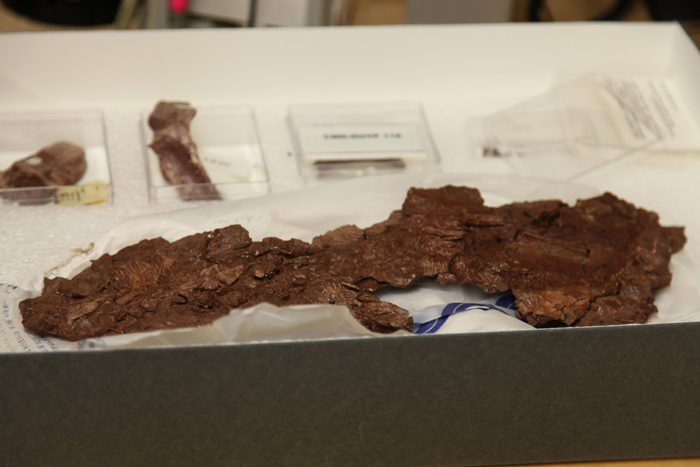
The newly-discovered tail-end of Tiktaalik roseae provides further evidence that the structures and mechanisms for walking evolved in water first. The findings are reported in the January 13th issue of PNAS in a paper by Neil Shubin, Ted Daeschler, and Farish A. Jenkins, Jr.
A piece of the pelvis
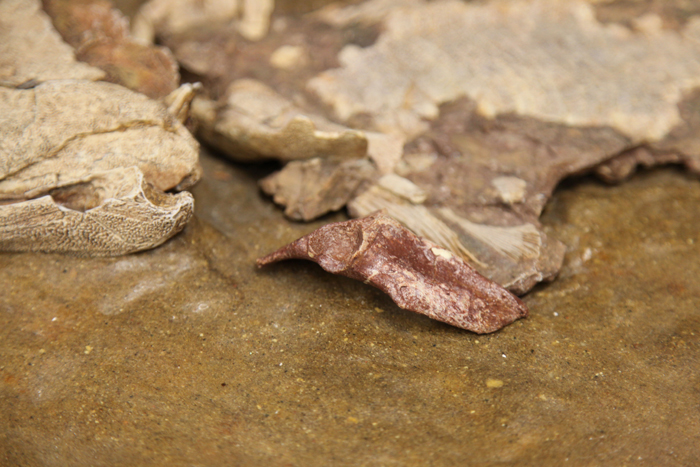
The newly discovered pelvis of Tiktaalik roseae is described in Neil Shubin's inaugural article at PNAS with co-authors Ted Daeschler and Farish A. Jenkins, Jr.. The discovery sheds light on the transition from life in water to life on land.
Excavation in progress
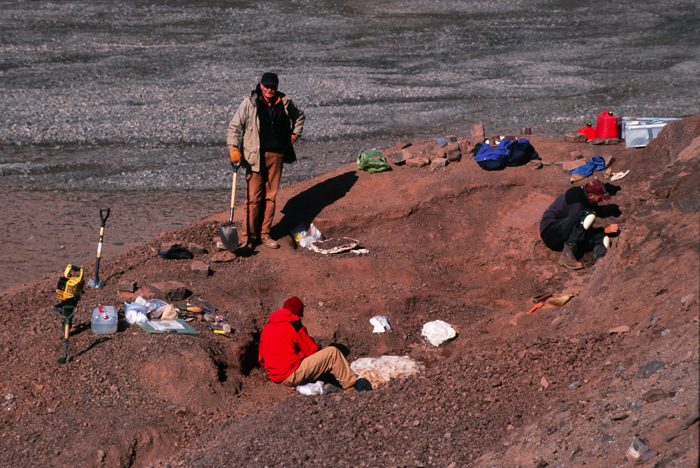
The crew excavates fossils in Bird Quarry in 2004. Several specimens lie encased in plaster, waiting to be shipped back to the labs for preparation.
Sign up for the Live Science daily newsletter now
Get the world’s most fascinating discoveries delivered straight to your inbox.
Researchers in charge
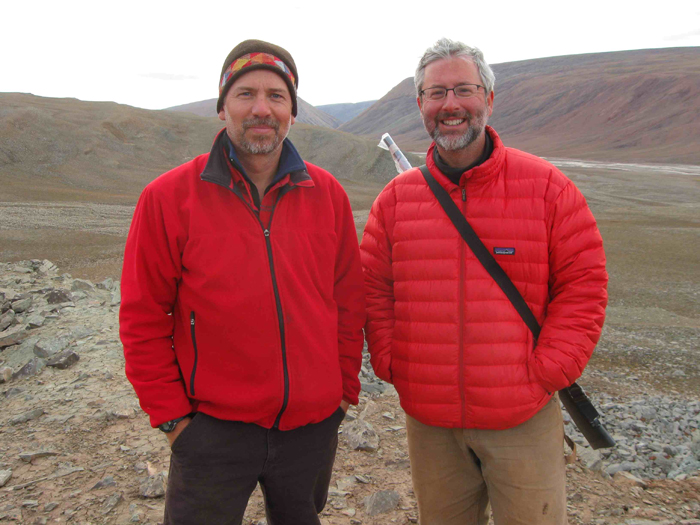
Paleontologists Ted Daeschler and Neil Shubin in the Canadian Arctic in 2008. Shubin, Daeschler, and Farish A. Jenkins, Jr. published new fossil finds from the transitional fossil Tiktaalik roseae in the January 13th early online edition of PNAS.
The discovery crew
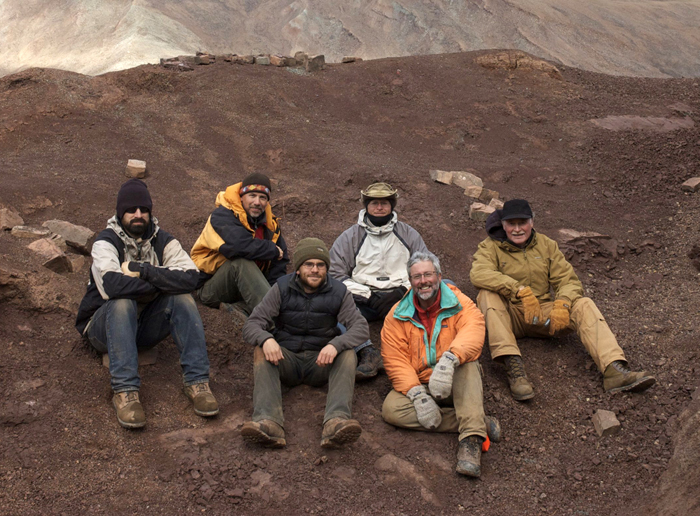
The 2008 field crew: (L to R) Jason Downs, Ted Daeschler, Andrew Gillis, Randall Dahn, Neil Shubin, Farish A. Jenkins, Jr.
The base camp
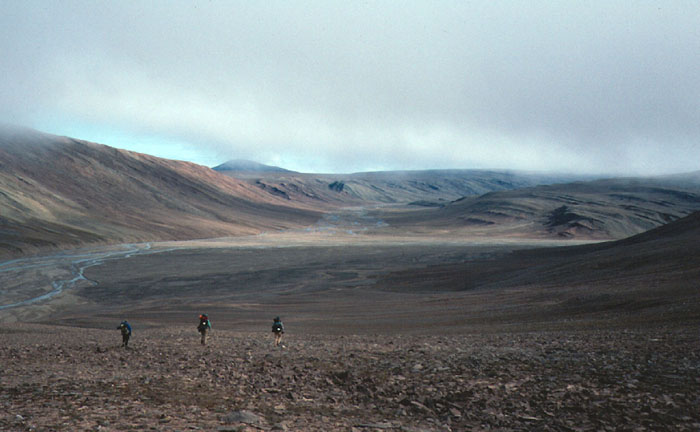
The valley in Bird Fiord where the team camped and made its discovery.










